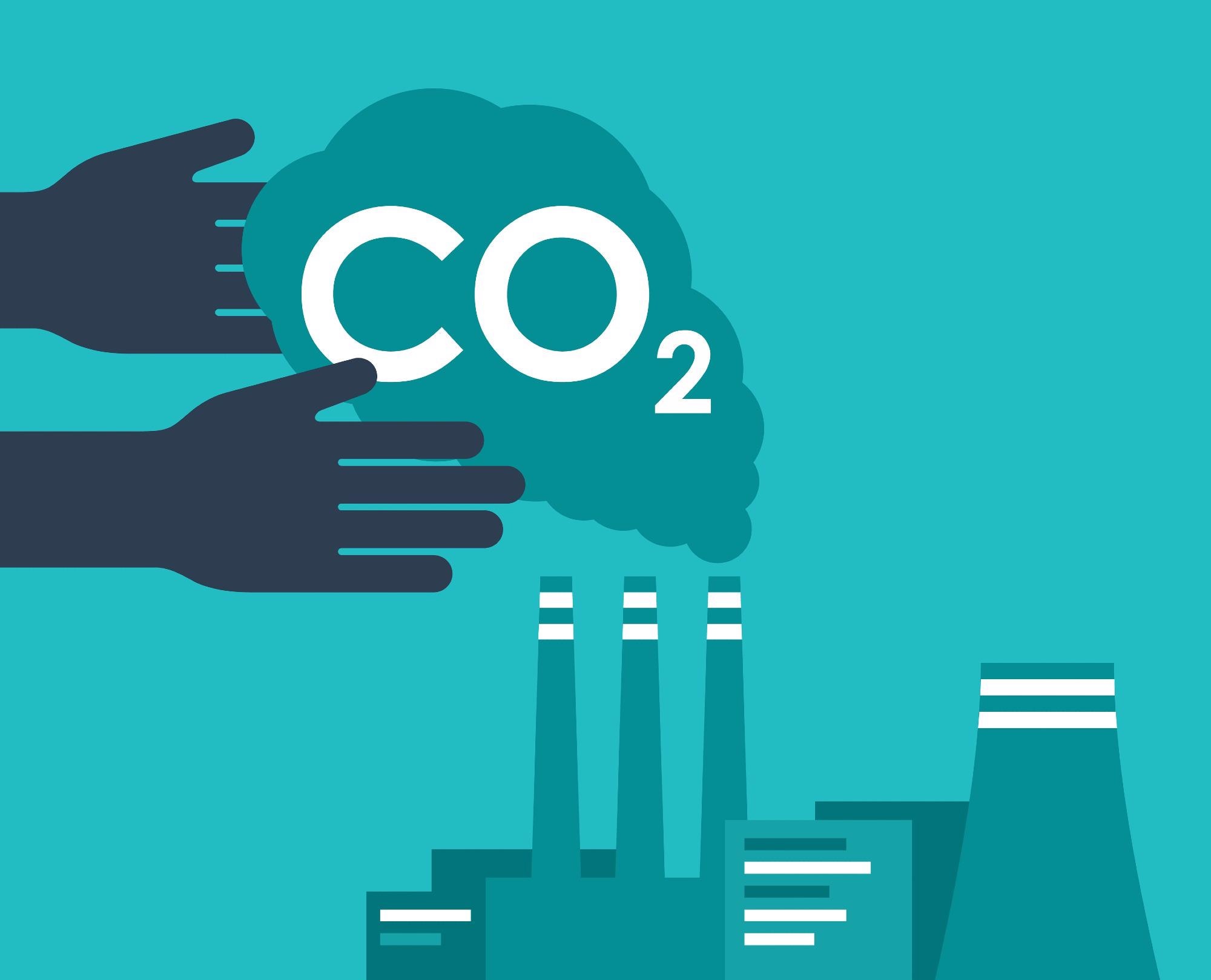In an article published recently in the journal ACS Applied Nano Materials, Friedel-Craft alkylation of triazine-thiophene (Tt) as a monomer with a succession of cross-linkage agents was used to incorporate Tt functional groups into the framework of a porous organic polymer (POP) in an effort to enhance carbon dioxide capture.

Study: Nanospace Engineering of Triazine−Thiophene-Intertwined Porous-Organic-Polymers via Molecular Expansion in Tweaking CO2 Capture. Image Credit: Dmitry Kovalchuk/Shutterstock.com
The Ever-Increasing Threat of Global Warming
The significant increase in carbon dioxide concentrations in the atmosphere produced by emissions due to human activities constitutes a serious climate emergency. Growing urbanization and industrial development cause carbon dioxide concentrations to skyrocket. Comparing the last decade to the mid-1800s, the mean carbon dioxide content in the environment has increased by almost 40 %.
Anthropogenic emissions continue to fuel global warming, which is growing at an estimated pace of 0.2 °C per decade. If this rate continues global temperature increases could approach 1.5 °C by 2100, as opposed to the current pace of 0.8 to 1.2 °C. Resolving this issue is both essential and difficult, but it is the only way to ensure the Earth will have a viable environment to live in.
Capturing Carbon Dioxide is Crucial for Minimizing Global Warming
Many researchers throughout the globe have advocated carbon dioxide capturing and storage to manage and reduce the quantity of carbon dioxide in the atmosphere, hence reducing the global warming impact. Several successful methods and techniques for effectively capturing carbon dioxide have been created.
The development of novel substances with good performance and excellent carbon dioxide capturing potential in an effective, inexpensive, and reliable way involves the construction of porous organic polymers (POPs), covalent organic frameworks, metalorganic frameworks (MOFs), porous carbons, zeolites, amine-modified silicas, and other substances.
POPs may be a Suitable Option for CO2 Collection?
Porous organic polymers (POPs) with particular characteristics, such as a large surface area, configurable pore size distribution (PSD), good mechanical and chemical reliability, customizable chemical features via numerous synthesis techniques, and a choice of natural foundations (monomers), could be a suitable option for effective carbon dioxide collection.
Functionalization of POPs may Improve their Carbon Dioxide Capturing Ability
Furthermore, the carbon dioxide attraction of these substances may be improved by introducing heteroatomic dopants such as nitrogen, oxygen and sulfur, which boosts the POP ability to engage with carbon dioxide more effectively.
The inclusion of such dopants creates a high electrical field in the porous material and in the pores, which strengthens the dipole-quadrupole engagement of quadrupolar carbon dioxide with the high polarity areas of polymers. Scientists have concentrated on covalent triazine frameworks in previous years because of their strong carbon dioxide adsorptive characteristics.
Key Findings of the Study
In this study, the team managed to develop a sequence of linker-reliant triazine-thiophene-interconnected nanoporous organic polymers (Tt-POPs) using the FeCl3-aided Friedel-Craft alkylation process of the monomeric Tt with three separate cross-linkage materials, formaldehyde dimethyl acetal (FDA), 1,4-bis(bromomethyl)benzene (BMB), and 4,4′-bis(bromomethyl)biphenyl (BBMP) respectively. Following this, a systemic comparison assay of their carbon dioxide adsorption potentials was carried out.
Due to the deep integration of heteroatomic functions (N and S), these high-porosity materials were discovered to have high BET surface areas and excellent chemical stabilities.
Accurate skeletal design using molecularly varying natural cross-linkage materials indicated variations in carbon dioxide absorption at 273 and 298 K, respectively. Tt-POP-2 outperformed Tt-POP-1, Tt-POP-2, and Tt-POP-3 in terms of carbon dioxide uptake despite possessing nanorod, nano cloud, and nanocoral-like architectures.
The explanation for this was that the engagement of carbon dioxide with benzyl and thiophenyl rings was preferred when the carbon dioxide molecule was almost parallel to the aromatic rings with a spacing of approximately 3.10 Å. Furthermore, the Ebind for carbon dioxide engagements at the thiophenyl (ring T) and benzyl rings (ring B) was more negative in the Tt-POP-2 configuration than in the Tt-POP-3 configuration.
The insertion of numerous linkers, which might ultimately adjust the carbon dioxide uptake capability, resulted in a successful skeletal design method. Following that, the mechanical route was thoroughly investigated. As a result of this research, a new route for the logical construction of carbon dioxide adsorbent materials for a sustainable and clean environment has been explored.
Reference
Das, N., Paul, R. et al. (2022). Nanospace Engineering of Triazine−Thiophene-Intertwined Porous-Organic-Polymers via Molecular Expansion in Tweaking CO2 Capture. ACS Applied Nano Materials. Available at: https://pubs.acs.org/doi/10.1021/acsanm.2c00311
Disclaimer: The views expressed here are those of the author expressed in their private capacity and do not necessarily represent the views of AZoM.com Limited T/A AZoNetwork the owner and operator of this website. This disclaimer forms part of the Terms and conditions of use of this website.